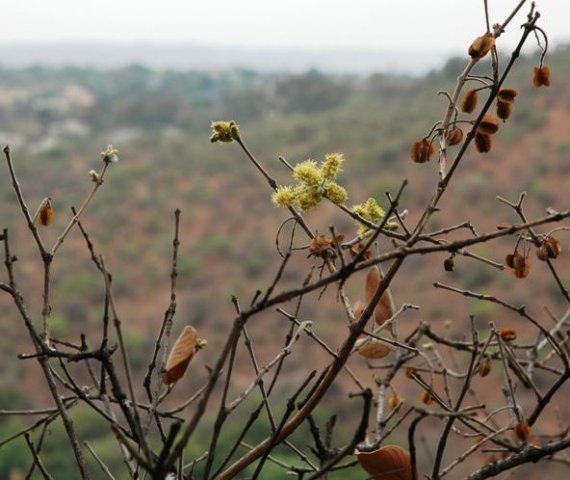Combretum molle between seasons

Author: Ivan Lätti
Photographer: Johan Wentzel
The velvet bushwillow or basterrooibos (Afrikaans), as Combretum molle (SA Tree List No. 537) is commonly known, is a diverse species with protean appearance disparities over its large African distribution. The southern-most part of this area lies in the north of South Africa. Some of these trees grow with the benefit of 800 mm annual rainfall, others with less than a quarter of that. The altitude of the tree’s habitat varies between a few metres to 1500 m.
The deciduous aspect of the tree is reflected in the picture: New and old leaves are both present on a mainly bare tree. At the same time some of last seasons fruits are still hanging from the branches, while the new flowers have started opening already. The photo was taken at the start of spring on the 10th of September.
C. molle is a medium-sized tree that reaches 10 m, although it quite often attains shrub status only. In the forest the tree takes many shapes, depending on what circumstances prevail, i.e. what space is available. Standing alone in ideal conditions, the velvet bushwillow will occasionally attain an imposing rounded crown and a commanding presence.
The wood is yellow and durable. Considerable use has been found for especially the leaves in traditional medicine. The tree grows fast, the seeds germinate easily. This tree deserves to be planted in parks and gardens within its distribution area or regions with compatible climates (Carr, 1988; Schmidt, et al, 2002; Coates Palgrave, 2002).

